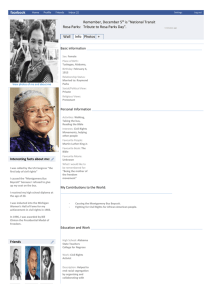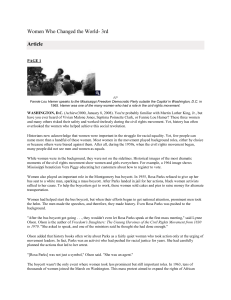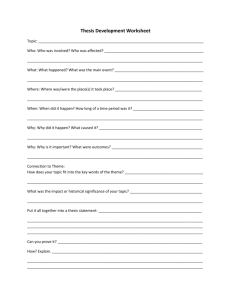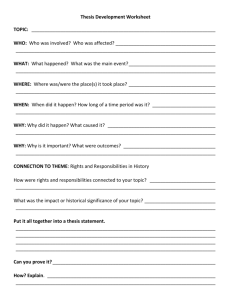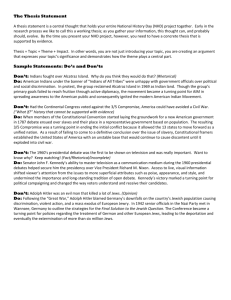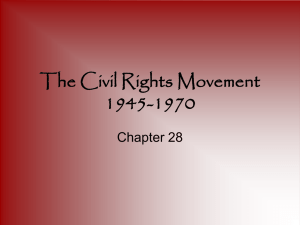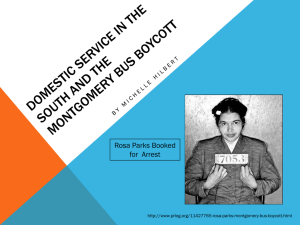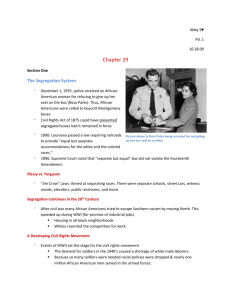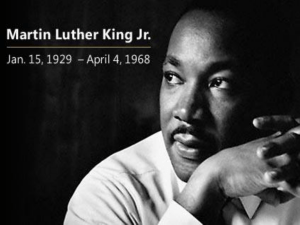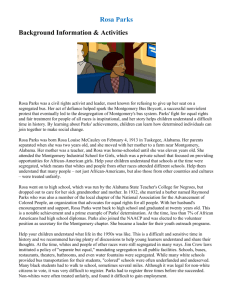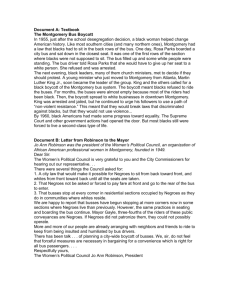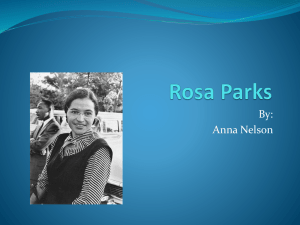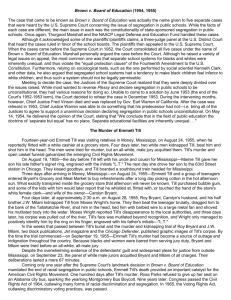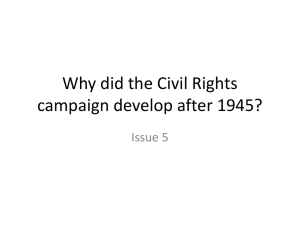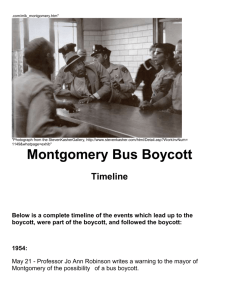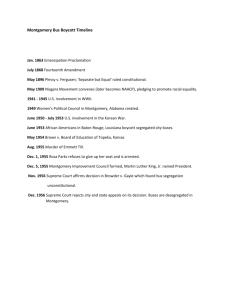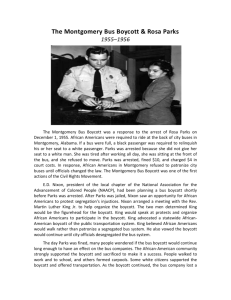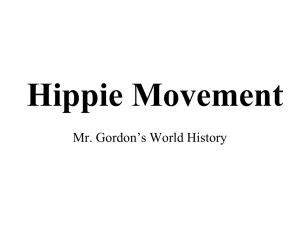Montgomery Bus Boycott
advertisement
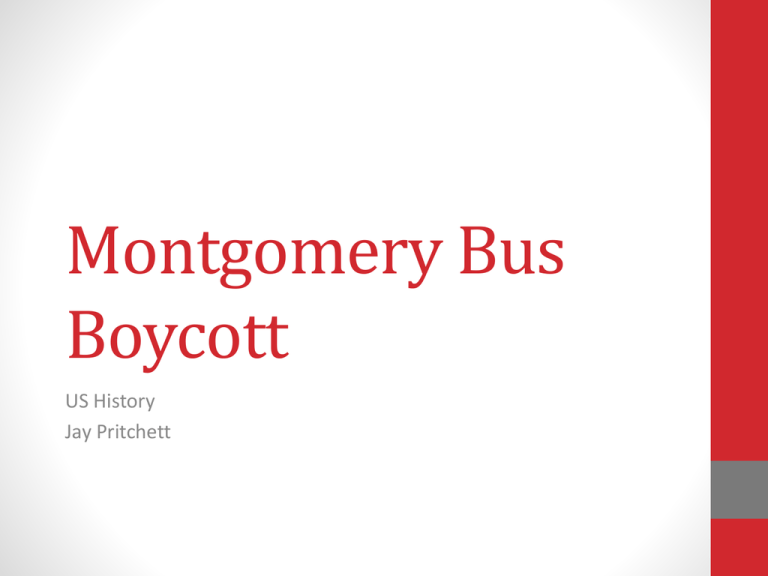
Montgomery Bus Boycott US History Jay Pritchett Historical Question • To what extent did the Montgomery Bus Boycott motivate the African Americans to demand the end of segregation? Historical Relevance • Rosa Parks defiance had sparked the Montgomery Bus Boycott and helped escalate the Civil Rights Movement. Learning Objectives • Illustrate how the Montgomery Bus Boycotts showed the power and influence of the African American community. • Demonstrate how it changed the course of the Civil Rights movement. Segregation • Definition – the enforced separation of different racial groups. • First started when African Americans came over the Atlantic as slaves. • During the 1950s – African Americans had to use public services such as schools expressly for Colored People. Rosa Parks • Born on February 4, 1913 in Tuskegee, Alabama to a carpenter and a teacher. • As a child, her mother encouraged her to be active in the struggle for civil rights. http://0.tqn.com/d/womenshistory/1/0/N/n/2/RosaParks-1988-ax.jpg • She married a barber, Raymond Parks in 1932. Both were members of the National Association for the Advancement of Colored People (NAACP). She also served as the secretary of the Montgomery chapter. What REALLY happened on the bus • On December 1, 1955 Rosa Parks left Montgomery Fair and got on the same bus as she did every night. • She always sat in the “black section” of the bus. • The bus became full and the driver instructed Rosa Parks to give up her seat. • She refused to give it up and was arrested. • Found guilty of violating the law and fined. http://1.bp.blogspot.com/3faspGkKd7M/T0QU_4v9dSI/AAAAAAAAF5w/Ms4Noi069M/s1600/RosaParksBusdiagram.jpg Why Rosa Parks • Claudette Colvin, age 15, had also refused to give up her seat 9 months ago on the same bus. • The NAACP considered using her incident as test case but due to her pregnancy it was dropped. • Parks had decided to approach the NAACP and volunteer to become a test case. http://www.spartacus.schoolnet.co.uk/USAparksR2. jpg The Boycott • After Parks arrest Martin Luther King JR helped organize protests against the bus segregation. • The boycott was originally only planned for the Monday after Parks was arrested December 3. • A night mass was held that day to determine if the protest should continue. Attendees enthusiastically agreed for it to continue. • The boycott proved extremely effective and caused serious economic damage to the bus system. • The boycott lasted for a year from December 3, 1955 to December 20, 1965. • 17,000 African Americans walked to work, car pooled, cycled and even rode horses and donkeys to work for 13 months until the desegregation of buses. Civil Rights Turning Point • It was the first time African Americans showed their unity in their cause for Civil Rights. • Bus companies were crippled financially because most of their riders were African Americans and most of those were women going to housekeeping jobs. Conclusion • Illustrate how the Montgomery Bus Boycotts showed the power and influence of the African American community. • Demonstrate how it changed the course of the Civil Rights movement. Works Cited • Burns, Stewert. "Montgomery Bus Boycott." Encyclopedia of Alabama. Auburn University, 9 June 2008. Web. 25 Mar. 2012. • Cozzens, Lisa. "The Montgomery Bus Boycott." Civil Rights Movement 1955-1965:. 29 June 1998. Web. 25 Mar. 2012. • "Montgomery Bus Boycott." History Learning Site. Web. 25 Mar. 2012. • "Rosa Parks." Academy of Achievement. Web. 25 Mar. 2012. • "Rosa Parks: Biography." Spartacus Educational. Web. 10 May 2012. • Wexler, Sanford. The Civil Rights Movement: An Eyewitness History. New York, NY: Facts on File, 1993. Print.
